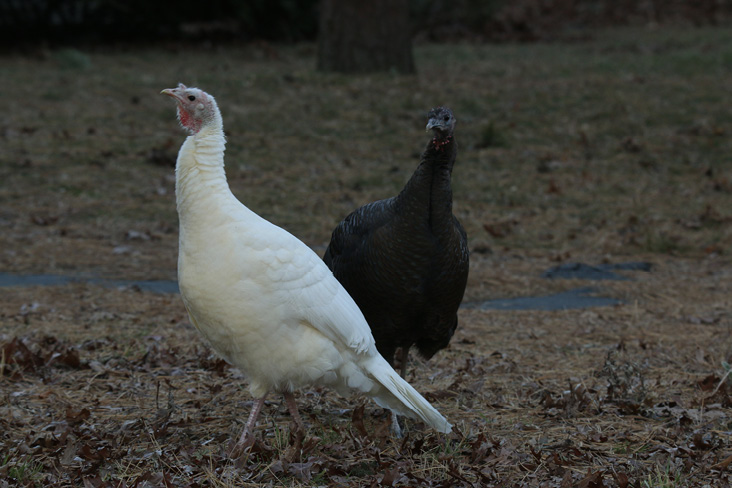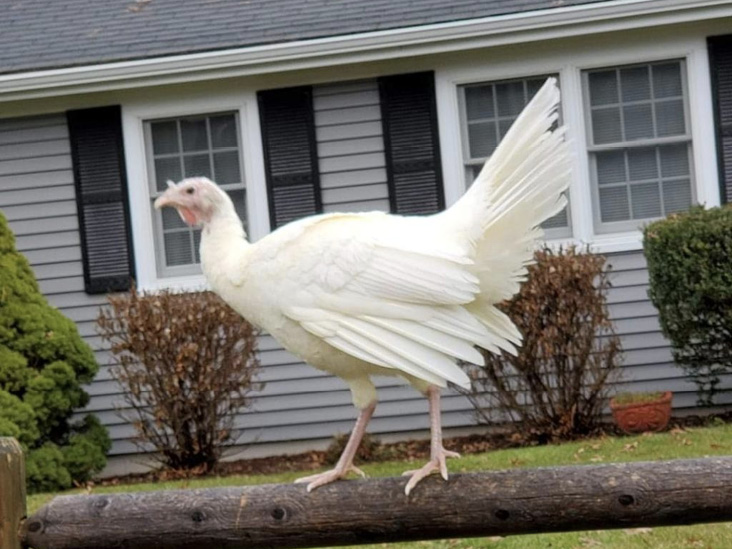Nate Marchessault

Wild Turkeys. Photograph by the author.
One of these does not look like the others.
As a child growing up in the 90s Pokémon was one of my favorite video games, and I use it as an analogy for birding to friends my age who show no interest in the hobby. The Pokémon slogan of "Gotta catch ‘em all!" probably has an air of familiarity to those in the birding world. In addition to the regular Pokémon creatures one collects in the game, there are "shiny" Pokémon, very rare and differing from others of the same kind only in appearance. Leucism and albinism provide us with "shiny" birds. Seeing a bird with one of these characteristics can be quite a treat; I can't say I can remember every robin or bluebird in my life but I do have vivid memories of the where, the when, and the appearance of leucistic birds I've encountered.
Leucism is a loss of pigment in some—or all—feathers on a bird. Albinism is a loss of melanin in all tissues, and both are rare occurrences in nature. Although it can occasionally be difficult to discern leucism versus albinism in an all-white individual, the key is to look at the eyes; if they appear normal in color for that species, the individual is leucistic, but if they are pink or red then the individual is an albino. Although albinism is typically associated with all-white individuals, not all albinos are completely white as other pigments are still expressed.

Leucistic Wild Turkey. Photograph by Chris Williams.
Leucism generally doesn't have a negative impact on the health of the individual. Albinism, on the other hand, prevents the production of melanin in all tissues, including that which is essential for the structural integrity of feathers, and the lack of melanin in the eye leads to ultraviolet radiation damage resulting in poor eyesight. Because of this, few albino individuals in the wild make it to adulthood.
Both conditions can also have a negative impact on the biological fitness of an individual by increasing the chances of it being caught by a predator. An albino or leucistic individual in a flock would be more easily singled out. Birds that use camouflage as a means of defense are especially at risk as their behaviors will remain the same but their ability to blend in does not. Picture an all-white woodcock standing in place to hide from a predator, not ideal!
The ‘all-white meat' turkey in the accompanying photo was seen on Cape Cod in the Yarmouth area around Thanksgiving. Most, if not all, of the feathers appear completely white, the skin is pale, and even the nails are white. The eye, however, appears dark, which would suggest that this bird is leucistic rather than albino.
With luck this one will be able to live out a long and prosperous life, and many people will get to enjoy the oddity. As for me, I'll take the dark meat for now.